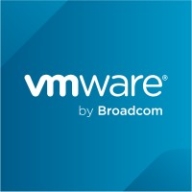

Find out what your peers are saying about Red Hat, Canonical, Oracle and others in Operating Systems (OS) for Business.
A long lifecycle is key to having a good return on investment.
Being able to transform common manual tasks that previously took all day into processes that take an hour, half an hour, or even less, demonstrates clear value.
Red Hat Enterprise Linux has saved us time and increased productivity.
We can say 10% is the approximate amount of savings because most of the things are automated and streamlined, so the manual work is eliminated in most cases.
Red Hat Enterprise Linux (RHEL) support is great, as they go beyond their duty to help resolve issues and provide solutions even for third-party software such as XRDP.
When we do contact customer service, they are generally very knowledgeable and well-versed in our size.
Usually, I send the information, and they have something for me within hours, sometimes even minutes.
Priority one issues are usually addressed by engineers within one to two hours.
Recently, support has been less friendly and slower, especially after the company was acquired by Broadcom.
If we have issues, the support tends to be unreliable
Many of our applications scale really well, with some having several hundreds of VMs, which we couldn't accomplish on Windows.
Red Hat Enterprise Linux (RHEL) scales very well with the growing needs of our company.
Red Hat Enterprise Linux (RHEL) handles increases in users, applications, or data smoothly, which is why we use it for all our projects, as it provides us with confidence.
Scaling is easy, whether it is hyperconverged or a three-tier architecture.
VMware vSphere is highly scalable in terms of the number of users and the number of servers it can handle.
It is a highly scalable solution.
It works consistently with minimal downtime and very few bugs or glitches.
It just works, and that's really the key factor; I can't remember the last time we had a system go down and had to restore it due to a bad patch.
We've not had a service outage with Red Hat in six years.
It is a very stable hypervisor solution.
While they are generally stable, if outages occur, they tend to be due to brands like HP or Dell, not VMware vSphere itself.
I would rate the stability of VMware vSphere as eight out of ten.
Addressing these limitations would significantly enhance the operating system's flexibility and efficiency.
The built-in security features of Red Hat Enterprise Linux were insufficient for our needs, necessitating the implementation of supplementary security measures.
By providing pre-installed, native automation tools within the operating system, Red Hat would streamline processes and improve user efficiency.
The cost changed from perpetual to subscription, and there is a need for alternative solutions.
Another area is the stability during upgrades from older versions to newer versions, where we face issues.
Sometimes, it is difficult to find documentation for specific tools and solutions.
It may be considered expensive compared to other solutions like CentOS or Ubuntu, which offer some of the same features without additional costs.
Its pricing has room for improvement because it's more expensive in the local market due to purchasing power parity in India.
Windows Servers base their cost on the number of users and have high licensing fees, while Red Hat Enterprise Linux offers free versions alongside its paid, supported versions.
Many customers are trying to avoid it due to its high cost.
Costs significantly increased from perpetual to subscription, with prices rising by two to three times over three to five years.
The solution is too expensive.
It also has strong security features, is OIS and FIPS certified, and has built-in Linux security configurations.
There is also no downtime.
The operating system allows for the simple addition of kernels, modules, and other applications, making it highly adaptable to various needs.
The vMotion feature is beneficial for online migration of virtual machines from one host to another without downtime.
The tool is highly available, which is crucial for implementing critical applications requiring 24/7 availability.
The high availability feature is significant.
| Product | Market Share (%) |
|---|---|
| Red Hat Enterprise Linux (RHEL) | 8.6% |
| Rocky Linux | 14.3% |
| Ubuntu Linux | 11.5% |
| Other | 65.6% |
| Product | Market Share (%) |
|---|---|
| VMware vSphere | 16.8% |
| Proxmox VE | 16.1% |
| Hyper-V | 15.2% |
| Other | 51.89999999999999% |


| Company Size | Count |
|---|---|
| Small Business | 84 |
| Midsize Enterprise | 47 |
| Large Enterprise | 249 |
| Company Size | Count |
|---|---|
| Small Business | 173 |
| Midsize Enterprise | 137 |
| Large Enterprise | 256 |
Red Hat Enterprise Linux is recognized for its stability, security, and performance, serving diverse industries with its robust support and seamless cloud deployment capabilities.
Red Hat Enterprise Linux provides comprehensive server applications across cloud environments, featuring tools like Ansible for enhanced user experience. It integrates OpenShift, Identity Management, and automation, supported by extensive documentation. Users seek easier upgrades, enhanced network virtualization support, and improved live patching.
What are the key features of Red Hat Enterprise Linux?In sectors like finance, telecommunications, and education, Red Hat Enterprise Linux is crucial for running stable, secure systems. Its application spans web servers, data management, and containerization through tools like Kubernetes. Organizations adopt it for on-premises, virtualized, and cloud environments, ensuring robust infrastructure management.
VMware vSphere is a versatile virtualization platform known for its ease of use, flexibility, and high availability. It supports seamless migration, optimal resource allocation, and centralized management, making it highly suitable for diverse infrastructure needs.
VMware vSphere is widely adopted for its virtualization capabilities that enhance hardware efficiency and ensure minimal downtime through features like High Availability and Distributed Resource Scheduler. Despite criticisms about high licensing costs and limited fault tolerance, it remains a preferred choice due to its stability, scalability, and robust integration options. Users appreciate its efficiency in managing virtual machines and hosting enterprise applications, although challenges with web client performance and hardware compatibility are noted. Organizations often look for better integration with cloud services and enhanced automation and scalability.
What are the core features of VMware vSphere?
What benefits and ROI can businesses look for?
VMware vSphere is implemented across sectors like healthcare, finance, and education for server virtualization, data center management, and private cloud creation. Its use in facilitating business-critical operations ensures high availability and efficient resource use, supporting both development and production environments.
We monitor all Operating Systems (OS) for Business reviews to prevent fraudulent reviews and keep review quality high. We do not post reviews by company employees or direct competitors. We validate each review for authenticity via cross-reference with LinkedIn, and personal follow-up with the reviewer when necessary.